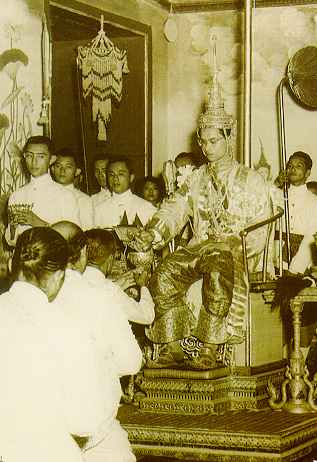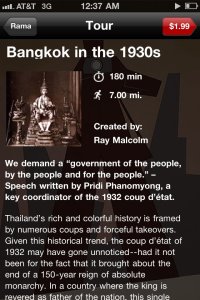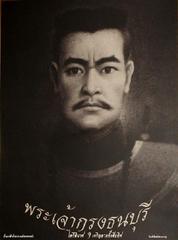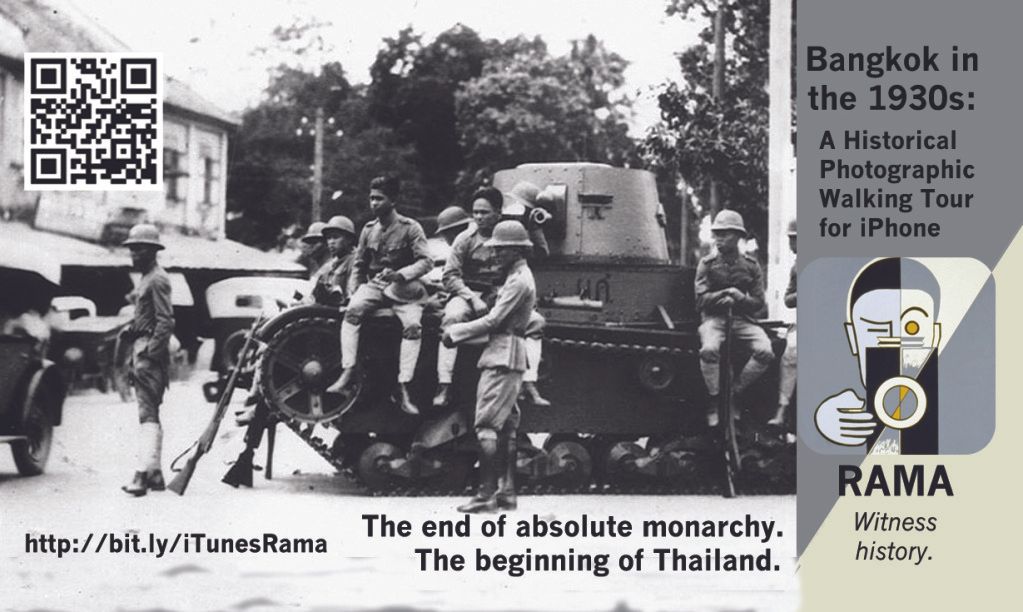Temple of the Emerald Buddha – Sacred or Sacrificed
Posted: May 30, 2011 Filed under: Temples | Tags: Bangkok, Krung Thep, Rama, Rattanakosin Island, Siam, Thailand, the city of angels, The Grand Palace, Wat Phra Kaew 1 CommentIn Bangkok’s spiritual heart, next to the lifeline of the Chao Phraya River, is Wat Phra Kaew – known by foreigners as the Temple of the Emerald Buddha. Located in the northeast corner of the Grand Palace, Wat Phra Kaew is one of Bangkok’s must-see temples and draws hundreds of visitors each day. The temple houses the Emerald Buddha statue, which was brought to Bangkok by Rama I when he was a general in the army of King Taksin. In 1785, when the Grand Palace was officially opened, Rama I enshrined the Emerald Buddha inside Wat Phra Kaew, where it has remained since.
To get to the temple, take the express boat to Tha Chang, then take a short walk along Thanon Na Phra Lan through the maze of street vendors and souvenir sellers until you come to the Gate of Glorious Victory. Once you step through the gates you will get a glimpse of the magnificent spires of the Phra Si Ratana Chedi and Phra Mondop, which are located on the upper terrace. This tantalizing view is just the tip of the iceberg, and more wonders wait to be revealed inside. The ticket office is at the end of the driveway on the left. As of the time of this blog post, tickets cost 400 baht for foreigners.
Inside the temple grounds, your eyes will be dazzled by the iridescent blues, reds, golds and silvers of the mirrors adorning the temple walls, which refract light in a thousand directions. Surrounding the whole compound are high arcaded walls, decorated with murals showing scenes from the Thai national epic, Ramakien. Fearsome statues, known as Yaksha, guard the Emerald Buddha and ward off evil spirits. The whole scene is like something from a gaudy fairytale, and the English novelist, W. Somerset Maugham wrote of it:
“It makes you laugh with delight to think that anything so fantastic could exist on this sombre earth.”
Since it was first built under Rama I, successive kings have added to and renovated Wat Phra Kaew. A wide range of architectural styles are present throughout the temple grounds including Thai, European and Chinese. This gives the temple its hodge-podge nature. During the reign of King Mongkut (Rama IV), a scale model of Angkor Wat was introduced. At the time, Cambodia was a vassal state of Thailand and Rama IV reputedly wanted to move the entire Angkor Wat to Bangkok. However, he was dissuaded from this excessive undertaking and decided instead to commission a scale model. To the east of the upper terrace is Phrasat Phra Thep Bidon, known as the Royal Pantheon. This ornate building is designed in Khmer style and features life-size statues of all the previous kings. It is only open on ceremonial days such as Chakri Day (April 6), when the current Chakri dynasty is celebrated, and Coronation Day (May 5).
The Emerald Buddha is enshrined inside the bot, the largest building at Wat Phra Kaew and one of the few original structures remaining. The bot is garishly decorated in traditional Thai style, with gilt and coloured glass walls surrounded by 112 garudas (birdmen) holding nagas (serpents), telling the tale of Indra, the god who saved the world by defeating the serpent-cloud that had swallowed all the rain water. Inside the bot, the Emerald Buddha sits on a nine-metre-high pedestal. This legendary statue is revered as protector of the country and only the king is allowed to touch it. The king traditionally changes the Buddha’s costume three times in the year to correspond with the start of the hot season, rainy season and cool season. Despite being called the Emerald Buddha, the statue is carved from a piece of solid jade, in the meditating posture of the Lanna school of northern Thailand. The statue was first discovered in 1434 when “lightning” shattered a chedi in Chiang Rai. In the ensuing chaos, a stucco Buddha image fell and some of the stucco was chipped, revealing the Emerald Buddha beneath. The figure then moved to Lampang and Vientiane before finally being carried to Thonburi by Chao Phraya Chakri (Rama I) in 1779.
If you’re looking for the tranquillity and authenticity of a traditional Buddhist temple, you won’t find it at Wat Phra Kaew. The steady stream of tourists ensures that the place is constantly bustling with a multitude of languages and nationalities. This makes it hard to really appreciate the beauty of Wat Phra Kaew and you will spend most of your time trying to avoid getting in other people’s photographs, or getting them in yours. As you enter the central bot, you will most likely get pulled along by the strong current of people – all fighting for space to leave their shoes – and find that you don’t really get any time to observe the exotic images that surround the walls. Before you know what’s happened, you will be back outside wondering what all the hassle was about. Wat Phra Kaew is best visited in the morning while you still have plenty of energy, it could be a real drain in the late afternoon.
The temple is definitely worth a visit but for a quiet place to relax, you’d be better heading to temples such as Wat Sanghathan, which, although off the tourist radar, is a great place to take in the ambiance of temple life. Wat Phra Kaew, unfortunately, has become little more than a money making machine, where the original sanctity has been replaced by the creeping tentacles of capitalism and the rush towards “modernism.” The Thais are a Buddhist people, and Buddhists believe in the universal concept of cause and effect. One has to wonder what the effect of all those unaccountable masses will be. If the countless kisses of pilgrims can wear away the foot of the statue of St. Peter in the Basilica, what will the noisy calamity of tourists in Wat Phra Kaew bring about as they continue to flock in the selfish pursuit of been-there-and-done-that.
Coronation Day 2011
Posted: May 5, 2011 Filed under: Festivals, History | Tags: Bangkok, Bhumibol Adulyadej, Chakri dynasty, Krung Thep, Thailand, the city of angels, The Grand Palace, Wan Chatramongkhol 1 CommentToday marks the 61st anniversary of the coronation of King Bhumibol Adulyadej (Rama IX), the world’s longest reigning monarch and ninth king of the Chakri dynasty. King Bhumibol – known as “The Great” – was crowned on May 5, 1950 in an elaborate ceremony that was said to outshine all previous coronations in Thailand. Every year, on May 5, the Thai people celebrate Coronation Day (Wan Chatramongkhol) in honour of their beloved king.
At the beginning of the Rattanakosin era, the first king of the Chakri dynasty, King Phra Buddha Yodfa (Rama I) moved the capital of Siam from Thonburi to the east bank of the Chao Phraya River and named it Krung Thep (City of Angels). As he set about constructing the new capital, he also made numerous reformations; one of which was the coronation ceremony of the king. According to Rama I’s inauguration protocol, any king not undergoing the coronation ceremony would not be able to assume the term “Phrabat” in front of the King’s title of “Somdej Phrajaoyuhua”.
Up until the reign of King Mongkut (Rama IV), the accession to the throne of the Siamese sovereign was not publicly celebrated. Instead, a private ceremony was held in which court officials would present the royal title and articles of royal use to the king. After Rama IV ascended to the throne on April 6, 1851, he issued an edict saying that the coronation of the king should be a joyous occasion and publicly celebrated, as was the case in all other countries ruled by a sovereign.
Under the present reign of Rama IX, Coronation day is celebrated over a three-day period, starting on May 3. The first day is dedicated to the previous kings of the Chakri Dynasty and a Buddhist ceremony is held at Amarindra Vinichai Hall in the Grand Palace, in which a high monk reads scriptures and delivers a sermon. Later on the first day, flags of honour are unfurled to distinguish various military units. On the second day, Buddhist and Brahman prayers are chanted to announce the coming auspicious day. The celebrations culminate on May 5, when the king traditionally makes offerings to Buddhist monks and leads a procession three times around the Grand Palace.
New iPhone guided tour comes to Thailand
Posted: April 28, 2011 Filed under: News | Tags: Annanta Sammakhom Throne Hall, Bangkok, Chalermkrung Theatre, Democracy Monument, iPhone, King Prajadhipok, Krung Thep, Memorial Bridge, Rama, Rattanakosin Island, Siam, Thailand, the city of angels, The Grand Palace, Wat Suthat 5 CommentsFor the last few months I have been lucky enough to be part of something big in the world of iPhone apps. In early January of this year, I discovered a call for writers who “know Thailand” on craigslist and, deciding that I had nothing to lose, I sent out an email expressing my wish to take the job. I didn’t expect to get a reply and so when I got an email saying that I seemed like the ideal candidate, I was a pleasantly surprised.
Even more surprising was the assignment I was given: I had to write a “historical” tour guide. Did I have to travel through time? Not quite.
Rama – an app designed by New York-based Crimson Bamboo – is available on the iPhone and puts a unique spin on the role of tour guides. The app harnesses the power of GPS, archival photographs and storytelling to create compelling tours that not only direct you to intriguing locations, but also inform and entertain you. Rama offers guided tours in a number of cities throughout the world and is looking to add new tours in the near future. This tour is the first for Thailand.
“Bangkok in the 1930s” takes you through a decade of economic crisis, coup d’états, political intrigue and the birth of a new nation. The narrative is set against the backdrop of Bangkok’s most famous temples and palaces and the tour guides you to places such as the Annanta Sammakhom Throne Hall – where the People’s Party staged a coup d’état in 1932 and ousted King Prajadhipok (Rama VII).
If you’re planning a trip to Bangkok, this guided tour offers you the perfect opportunity to discover places that you may otherwise overlook, while learning about the country’s history in a compelling and interactive way.
“Bangkok in the 1930s” is available as an in-app purchase at $1.99 on Rama, an iPhone app found on iTunes: http://bit.ly/iTunesRama or through the developer’s website at http://www.crimsonbamboo.com.
The Nine Kings of the Chakri Dynasty: Rama I – The Founding Father
Posted: April 20, 2011 Filed under: History, The Chakri Dynasty | Tags: Ayutthaya, Bangkok, Krung Thep, Rattanakosin Island, Siam, the city of angels, The Grand Palace, Thonburi 3 CommentsBetween Two Kingdoms
After the city of Ayutthaya fell to the Burmese in 1767, Siam went through an itinerant period in which the population was displaced and wealth and resources were lost. The Burmese, confident that they had subdued the Siamese forces, withdrew their main armies back to Burma, and left only a few thousand soldiers under the command of a Mon general. This was a fatal error and their occupation of Siam was to be short-lived. Six months after the Burmese had sacked Ayutthaya, a senior officer from the Ayutthayan army, led 5,000 men and more than a hundred boats to the stronghold at Thonburi. He captured and executed the general in charge then proceeded to make Thonburi his headquarters. Before long, he stood out as a strong leader and sometime in 1768 he was chosen as king by popular consent; his name was Taksin. He ruled Siam in an unorthodox fashion and gained the reputation of being impulsive and short-tempered.
During the reign of King Taksin, two brothers rose to prominence as generals in his army. These two brothers were Bunma and Thong Duang. Bunma had been a close ally of Taksin’s during his military campaigns and it was he who convinced his brother to join Taksin’s army. They both became respected generals and in 1778, Thong Duang led an army to the northeast and invaded Laos. He returned to Thonburi triumphant and brought with him the Emerald Buddha statue. This acquisition undoubtedly increased Thong Duang’s prestige and would have been taken as an auspicious sign for the kingdom. He was later promoted to the rank of Chaophraya Chakri, which would be the equivalent of a modern day Field Marshal.
Taksin became more eccentric towards the end of his reign and when he came into conflict with numerous Buddhist monks, his popularity diminished. This, among other things, planted the seeds of his demise. He was later forced to abdicate and took refuge as a Buddhist monk in Wat Chaeng. A succession struggle ensued in which Thong Duang emerged as the strongest contender for the throne. Once he had asserted his power in the capital, he recalled Taksin from Wat Chaeng and put him on trial to face charges of misconduct. Found guilty, he was beheaded on April 7, 1782.
A New Beginning
Not long after taking command, the new king, who later became Rama I or Phra Buddha Yodfa, distanced himself from the reign of Taksin by reversing a number of his decisions and stressing the dignity of the highest office. Fifteen days after been accepted as Siam’s new ruler, Rama I moved the capital from Thonburi to the east bank of the Chao Phraya River. He established the first city pillar and named the new capital Krung Thep. Only foreigners continued to use the old village name, Bangkok.
Construction of the king’s palace proceeded at a feverish pace and it was decided to model the new city on the old capital – Ayutthaya. It seems the king wanted to regain some of the grandeur of Ayutthaya and perhaps rekindle the flames of a golden age in Siamese history. Whatever the reasons, it is known that Rama I ordered ship-loads of bricks to be brought from Ayutthaya and Thonburi to use as basic building materials for the palaces, fortifications and temples. Whether this decision was made due to economic constraints or for ritual value is impossible to say.
On June 6, 1782, Rama I formally ascended the throne in a traditional ceremony in which monks chanted over a container of water for three days before using it to transform the general into a king. The king was carried by palanquin from Thonburi to Bangkok at an auspicious hour. He was then anointed in his palace and presented with a suitable array of royal names. This marked the beginning of the Chakri dynasty, which the present day monarch, Bhumibol Adulyadej, is descended from.
A Stable Siam
Two years after the king’s ascension to the throne, Bangkok was starting to look like a capital city. An audience hall, library and temple had been constructed within the palace compound and an official opening ceremony was held in which the king was anointed a second time. He developed a daily routine which included giving alms to Buddhist monks, discussing court finances and matters of general importance, and listening to sermons in the audience hall. During his daily meetings, the king would regularly request the Department of Registration to disseminate the royal edict. One of these edicts enforced a law prohibiting civil servants from gambling. In the opening preamble of the edict the state of affairs in Siam is revealed: “Nowadays there are but few amongst the populace who are truthful and who make a living in a law-abiding manner.” Gambling was big business at the time and many people made their fortunes from it. Indeed, Rama I later had to revise the law when it became apparent that State revenue was suffering. He allowed gamblers to continue borrowing money but the license-holders were instructed to lend money based on the means of individuals to avoid excessive debt burden.
Another important reform under Rama I was the revision of the Siamese version of the Buddhist Tripitaka. When the king had been informed that many of the old texts contained mistakes, he organised a council of learned men to edit the extant versions and compile a definitive set. The revisions of the text were finished within five months and a festival was organized to commemorate the new Tripitaka. During the festivities, the roof of the library caught fire as a result of the firework display. Rama I took this as a sign that the old building had not been sufficient and ordered the construction of a sturdier edifice.
With a stable Siam now emerging, Rama I also dedicated some of his time to promoting the arts, particularly the literary arts. Many of the ‘great classics’ were re-written including one of Siam’s best-known tales, Ramakien, which is derived from the Indian Ramayana. The king supervised the rewriting of Ramakien and is believed to have written parts himself. The story of Ramakien is also told in murals on the walls of the Grand Palace.
It was this dedication to the kingdom that helped Rama I to build a strong Siam. His statecraft set the wheels in motion for future kings of Siam, but it wasn’t without opposition and the threat of Burmese invasion was as real as ever.
Conflicting Forces
In the same year that Bangkok was officially opened, King Bodawpaya of Burma, encouraged by numerous military successes, decided to launch an attack on Siam. The Burmese opened five different fronts at strategic locations including Chiang Mai, Petchaburi, the far southern provinces, the Three Pagoda Pass and the town of Tak. The Siamese responded by deploying three forces and Bodawpaya met with the army led by Siam’s uparat (deputy-king), who was none other than Bunma, the king’s brother. At first, the Burmese appeared to have the upper hand, but after food shortages and an outbreak of smallpox, the Siamese sent Bodawpaya and his troops into retreat, harassing them all the way to Burmese territory.
During these battles, the uparat came into conflict with his brother over a request to execute a number of ministers who had failed to fulfill their duties. Because these ministers were close friends of the king, he denied the uparat’s request but gave him permission to punish them. The guilty ministers were stripped of their ranks and their heads were partly shaved before being marched around the camp.
Rama I and his brother were frequently at odds during his reign and feelings of rivalry existed between them. The king had consistently used his power to undermine his brother’s position and towards the end of his life the uparat planned a coup d’état to overthrow Rama I and place his son on the throne. However, he became ill and died before he could carry out his plan. A number of co-conspirators were discovered and executed.
The Legacy
Rama I was born Thong Duang March 20, 1737 to a high-ranking government officer and his Chinese wife. Though he wasn’t born of royal blood, he rose through the ranks and became king of Siam by virtue of his steadfast character, decisive actions and leadership skills. His rise to the throne also fitted the Buddhist belief of karma and his legitimacy depended not on his bloodline but on ties of incarnation. He claimed to be a Bodhisatta, who had attained good karma through merit making in previous lives, and would become a Buddha in his next life.
Rama I was a conservative king, quite the opposite of the eccentric Taksin, and he held the pride of the kingdom above all. Through his numerous reforms, Siam started a new chapter in its history which, though veiled in the guise of orthodoxy, was in fact a time of innovation and would eventually lead to westernization and the fall of the absolute monarchy. He died aged 72 on September 7, 1809. He was the father of some 42 children to 28 mothers; divorce lawyers would have loved this guy.
On his death bed Rama I prophesised that his dynasty would last but 150 years. To find out how that prophecy did (at least in part) come true, stay tuned to this blog as we follow the lives of the Nine Kings of the Chakri Dynasty.
What’s In a Name? That which we call Bangkok by any other name would smell as putrid.
Posted: April 17, 2011 Filed under: History | Tags: Bangkok, Krung Thep, Rattanakosin Island, Thailand, the city of angels, The Grand Palace 2 CommentsTo adoring farangs the world over, Thailand’s sin city is known simply as “Bangkok.” But what is the meaning of the name? And would Bangkok smell any better if was called something else? In the following passages I will attempt to unravel the mystery of the name and reveal a few misconceptions, too.
The Birth of an Angel
When Phra Buddha Yodfa (Rama I) moved Thailand’s capital from Thonburi in 1782, he wanted to build a city worthy of the previous kingdom of Ayutthaya. He set about driving piles into the marsh-ridden ground and began the construction of the Grand Palace. The plot of land that Bangkok was built on was then known as Bang Kok, which means “The Village of Plum Trees.” Over time, this name was forgotten by the locals but survived in the international appellation Bangkok. In fact, the Thai people don’t usually call their capital city “Bangkok” at all.
To Thai people, Bangkok is known as Krung Thep. But that’s not the end of it. The Thai name for Bangkok is the longest name for a capital city in the world and is listed in the Guinness Book of Records. Below is the full, ceremonial name of Thailand’s capital:
“Krung Thep Mahanakhon Amon Rattanakosin Mahinthara Yuthaya Mahadilok Phop Noppharat Ratchathani Burirom Udomratchaniwet Mahasathan Amon Phiman Awatan Sathit Sakkathattiya Witsanukam Prasit.”
Long, isn’t it. If that doesn’t mean much to you, here’s the translation:
“The city of angels, the great city, the eternal jewel city, the impregnable city of God Indra, the grand capital of the world endowed with nine precious gems, the happy city, abounding in an enormous Royal Palace that resembles the heavenly abode where reigns the reincarnated god, a city given by Indra and built by Vishnukarma.”
This ceremonial name is derived from two ancient Indian languages, Pāli and Sanskrit. The only Thai word in the name is the initial Krung which means “capital”. It is still taught in schools, though nowadays, most of the younger generation do not understand the meaning of the archaic words. The older generation may remember the name thanks to a popular song, Krung Thep Maha Nakhon (1989) by Asanee-Wasan Chotikul. If you ask a Thai person about this song, you may be lucky enough for them to give you a rendition. If you can’t get that, click on the name of the song above and listen to it on YouTube.
The common misconception that most farangs have is that “Bangkok” means “The city of angels.” So, next time you hear two farangs arguing over the meaning of “Bangkok,” you can amaze and perhaps perplex them, by revealing that Bangkok does in fact mean “The Village of Plum Trees.”
Whatever we call this concrete jungle, it will always smell like warm dog vomit mixed with chilli sauce; my favourite dish on the soi.














